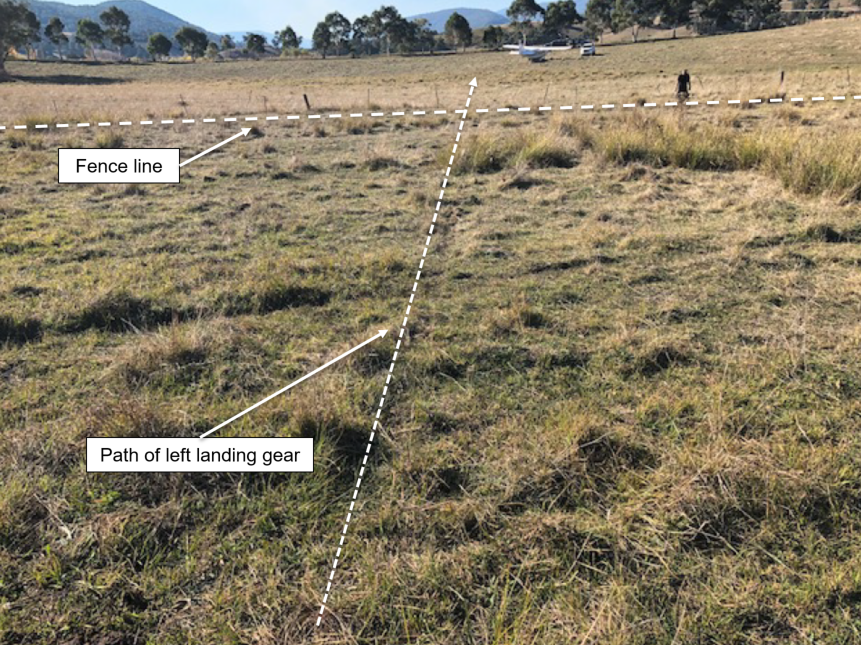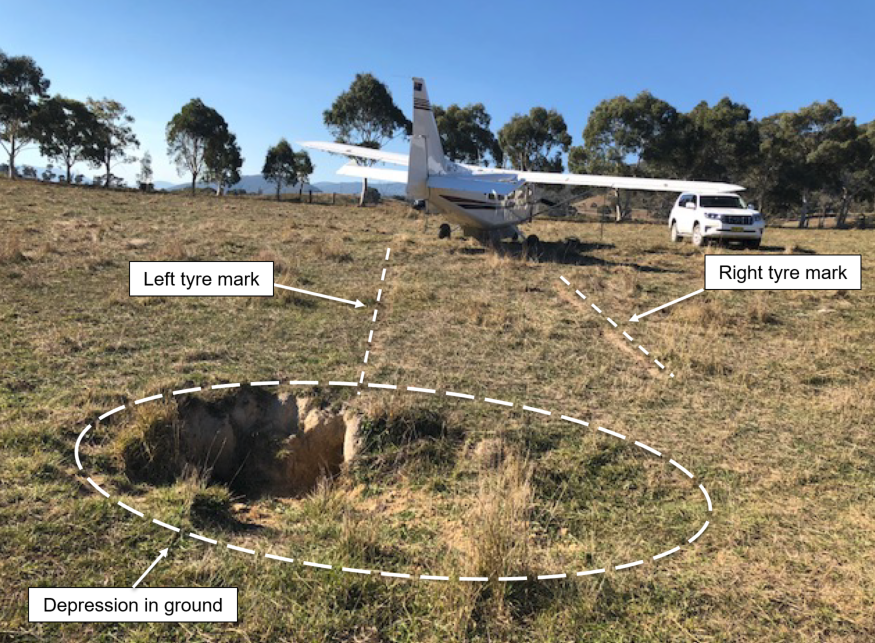| Occurrence Briefs are concise reports that detail the facts surrounding a transport safety occurrence, as received in the initial notification and any follow-up enquiries. They provide an opportunity to share safety messages in the absence of an investigation. |
What happened
On the afternoon of 30 April 2018, a GippsAero GA8 Airvan was in cruise at 12,000 ft tracking toward Canberra, Australian Capital Territory when the aircraft lost engine power. There was one pilot and one passenger on board.
The pilot declared a MAYDAY to Canberra air traffic control (ATC) and was instructed to activate the emergency locator transmitter.[1] The pilot elected to land in a cleared paddock and conducted an emergency landing. During landing, the aircraft travelled through a fence (Figure 1) and struck a log and a depression in the ground, before stopping (Figure 2). The aircraft sustained damage to the propeller and landing gear as well as damage to the windscreen and fuselage from contact with the fence.
There were no injuries and the pilot contacted Canberra ATC, with the assistance of another aircraft flying in the vicinity, to advise of their safe landing.
Figure 1: Aircraft path across paddock

Source: Copyright owner annotated by ATSB
Figure 2: Final position of aircraft including ground depression struck

Source: Copyright owner annotated by ATSB
Engineering inspection
The engine was removed and sent to an approved engine facility where it was disassembled and inspected. The inspection revealed that the engine crankshaft had separated between crank cheek number 8 and the number 5 connecting rod journal. A defect report for the crankshaft has subsequently been submitted to the Civil Aviation Safety Authority. The engine had completed approximately 1,055 hours since overhaul.
Safety message
Following a complete engine failure, a forced landing is inevitable. In this instance, the pilot followed standard emergency procedures to ensure a safe outcome was achieved.
About this report
Decisions regarding whether to conduct an investigation, and the scope of an investigation, are based on many factors, including the level of safety benefit likely to be obtained from an investigation. For this occurrence, no investigation has been conducted and the ATSB did not verify the accuracy of the information. A brief description has been written using information supplied in the notification and any follow-up information in order to produce a short summary report, and allow for greater industry awareness of potential safety issues and possible safety actions.
__________


